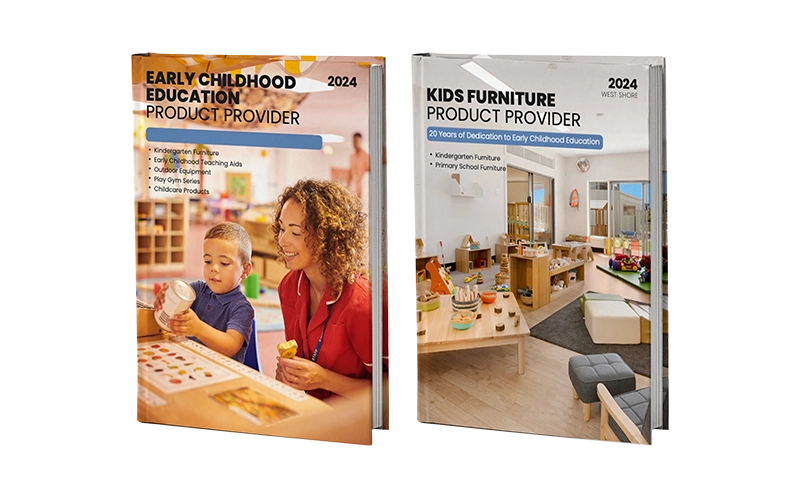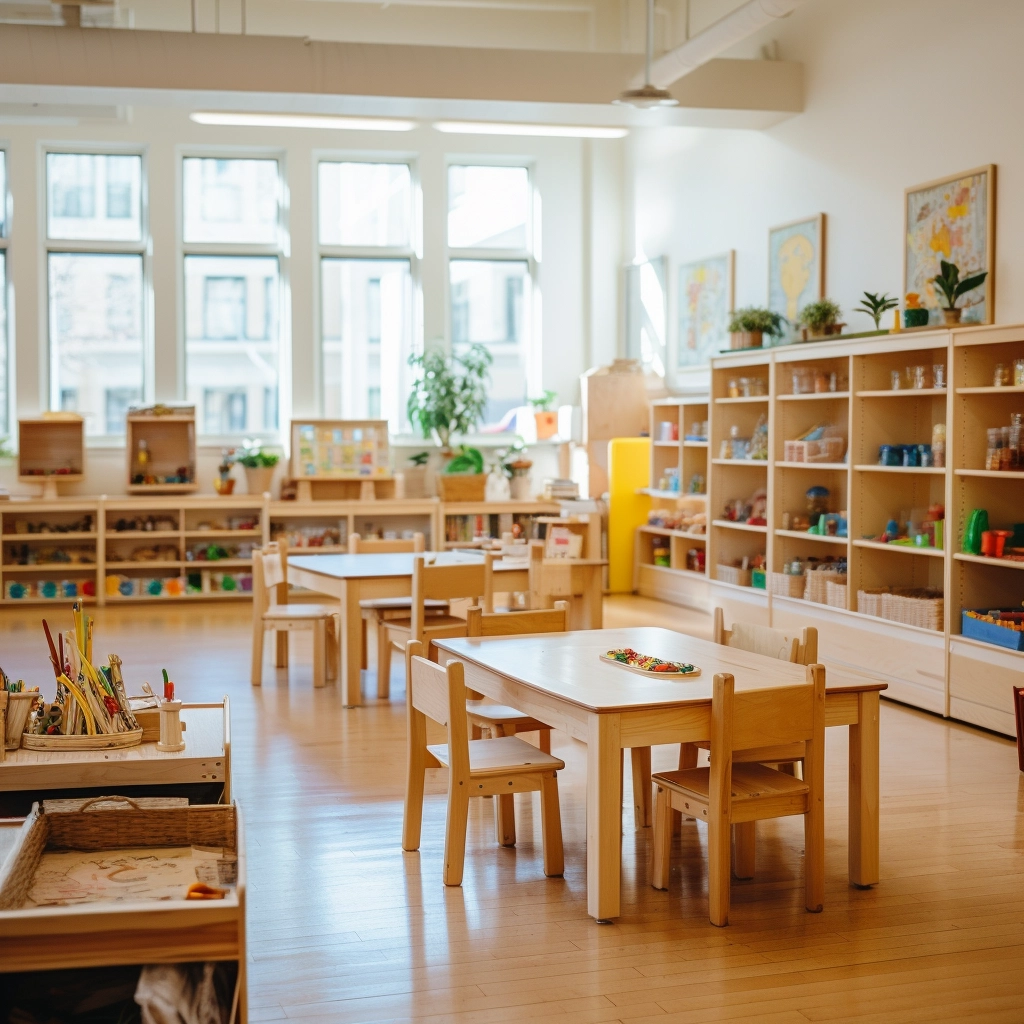What makes a preschool classroom design truly supportive of young children’s growth? Is it the cheerful colors, the child-friendly furniture layout, or the thoughtful arrangement where every corner invites children to play and learn? Designing an adequate space goes beyond decoration—it’s about crafting an environment where children feel safe, engaged, and free to explore.
In 2025, educators must carefully consider essential Preschool Classroom Setup factors to achieve a balanced space that supports safety, active learning, and flexibility. A well-designed classroom takes into account how children move, interact, and grow—encouraging independence, social development, and natural curiosity through purposeful design choices.
This article explores the six most important elements of modern preschool classroom design, helping you build a learning environment that meets the needs of both children and teachers.

좋은 유치원 교실 환경은 어떤 모습일까?
"환경은 세 번째 교사입니다." — 레지오 에밀리아 접근법의 창시자, 로리스 말라구치.
유아 교육에 있어 교실은 단순한 배경이 아니라 아이의 학습 여정에 적극적으로 참여하는 공간입니다. 잘 설계된 유치원 교실은 마치 친절한 안내자와 같습니다. 말 없이 말하고, 압박 없이 초대하며, 훈계 없이 가르칩니다.
모든 선반, 러그, 그리고 구석구석이 호기심, 협동심, 그리고 자신감을 조용히 북돋아 주는 공간을 상상해 보세요. 성장을 위해 준비된 정원처럼, 좋은 유치원 환경은 아이들에게 부담을 주지 않고 오히려 양육합니다. 아이들에게 자유롭게 움직일 수 있는 자유, 탐험할 수 있는 안전함, 그리고 성장할 수 있는 구조를 제공합니다.
이러한 균형을 이루기 위해 교육자는 유치원 교실 환경 조성의 핵심 요소들을 신중하게 고려해야 합니다. 이러한 요소들은 공간을 기능적이고 영감을 주는 공간으로 만드는 기본 요소입니다. 다음 섹션에서는 유치원 교실을 학습과 유년기 모두가 풍요로울 수 있는 공간으로 만드는 여섯 가지 필수 요소를 살펴보겠습니다.
유치원 교실 구성 요소 1: 물리적 공간
The physical space in a preschool classroom is not merely about square footage—it is the architectural foundation of a child’s learning journey. A well-designed layout does more than organize furniture; it shapes how children move, interact, focus, and explore within the environment.
A practical classroom layout balances openness and boundaries. Children should have enough room for indoor activities—such as block play, circle time, and dramatic play—while still experiencing a sense of structure through clearly defined zones. For example, large open spaces encourage collaboration and group exploration, while smaller, bordered areas like a reading corner or art station promote focus and calm.

Flexibility is key. Incorporating lightweight, movable furniture allows teachers to adapt the space for different purposes throughout the day. A classroom that can transition smoothly from active movement to quiet reflection supports a wide range of learning styles and energy levels.
Design also plays a role in managing noise levels and acoustics, ensuring that the environment remains calm and conducive to focused learning. Moreover, natural light and access to outdoor learning spaces can expand the sense of space and bring in sensory richness that deepens engagement.
In short, the physical environment becomes an active facilitator—encouraging independence, guiding behavior, and supporting developmentally appropriate learning throughout the day.
유치원 교실 환경 설정 요인 2: 장식 및 시각적 매력
Decorating a preschool classroom is not just about making it look attractive—it’s about creating an intentional, stimulating environment that supports learning and emotional well-being. As an essential Preschool Classroom Setup Factor, thoughtful decor can spark creativity, encourage exploration, and help children feel connected to their space.

Color and texture significantly influence how children engage with their surroundings. Bright, cheerful tones can energize the room and foster a welcoming atmosphere, while natural hues and soft textures help create a calming balance. Incorporating a mix of both allows different areas of the classroom to serve distinct purposes—some vibrant and active, others quiet and soothing.
Visual elements should serve both aesthetic and educational purposes. Alphabet charts, number lines, visual schedules, and thematic bulletin boards offer visual reinforcement of key concepts. Adding maps, seasonal displays, or learning posters turns blank walls into meaningful learning tools.
Decor should also be personal and purposeful. Featuring children’s artwork, family photos, or classroom projects promotes a sense of ownership and belonging. These visual displays affirm each child’s value and contributions to the classroom community.
In short, Preschool Classroom Setup decisions about decor should balance beauty, function, and meaning—creating a visually rich space that nurtures imagination and learning every day.
유치원 교실 환경 설정 요인 3: 연령에 맞는 가구 및 장비
Choosing age-appropriate furniture and equipment is essential for creating a classroom that supports both safety and development. Preschoolers require furnishings that match their physical size, developmental abilities, and growing need for autonomy. Every chair, table, and shelf should contribute not only to comfort but also to learning and independence.

Well-designed preschool furniture should be low in height, sturdy, 그리고 free of sharp edges. Tables and chairs should allow children to sit with their feet flat on the floor and arms resting comfortably, promoting proper posture and reducing fatigue. Storage units and shelves must be within easy reach, encouraging children to access and return materials independently—an essential part of building responsibility and routine.
Montessori-style furniture is a popular choice in early childhood settings, as it emphasizes child accessibility and functional simplicity. Open shelving, child-sized sinks, and light, movable pieces help create an environment where children feel in control of their learning space.
When it comes to equipment and materials, selections should align with children’s cognitive, sensory, and motor skill development. Items such as tactile toys, manipulatives, child-safe art supplies, and simple tools like scissors or brushes should be safely usable without constant adult assistance.
In short, appropriate furniture and equipment do more than fill a room—they empower children to move, choose, and participate in daily activities with confidence and ease.
Preschool Classroom Setup Factor 4:Safety and Accessibility
A critical Preschool Classroom Setup Factor is ensuring both safety and accessibility throughout the learning environment. Young children thrive in spaces where they can move freely, explore confidently, and engage with materials without unnecessary risks.

To ensure safety, classrooms should be free of tripping hazards, with walkways kept clear and open. All furniture should have rounded edges and be made of non-toxic, durable materials. Electrical outlets must be covered, and heavy items should be securely anchored. Regular safety inspections help maintain a hazard-free space and ensure compliance with early childhood safety standards.
Accessibility is equally essential. Young children should be able to reach learning materials, use furniture, and navigate between activity zones without adult intervention. This means providing low, open shelves, step stools, and marked paths. Doorways, bathrooms, and sinks should accommodate all learners, including those with mobility challenges.
Adequate supervision is also part of this Preschool Classroom Setup Factor. Teachers should be able to see every corner of the room without obstruction, allowing for both freedom and guidance. Low dividers and open layouts support clear visibility while still creating defined learning zones.
By prioritizing both safety and accessibility, educators create an inclusive and secure environment where children are free to explore, take initiative, and participate fully in daily activities—laying the foundation for confident and independent learning.
유치원 교실 환경 설정 요인 5: 학습 공간 구성
잘 정돈된 교실은 예측 가능하고 차분하며 생산적인 환경을 조성합니다. 명확한 정돈은 교사가 공간을 효율적으로 관리하는 데 도움이 될 뿐만 아니라, 아이들이 주변 환경에 대한 주인의식을 갖도록 해줍니다. 모든 것이 제자리에 있고 모든 공간에 목적이 있을 때, 아이들은 더 강한 책임감, 독립심, 그리고 집중력을 발달시킵니다.
효과적인 유치원 교실은 일반적으로 뚜렷한 학습 구역으로 나뉘며, 각 구역은 특정 유형의 활동에 맞춰져 있습니다.
일반적인 미취학 아동 교실 학습 구역은 다음과 같습니다.
- 독서 공간 – 책과 쿠션이 갖춰진 아늑하고 조용한 공간으로, 혼자 또는 함께 독서를 즐기기에 좋습니다.
- 드라마틱 플레이 공간 – 상상력 있는 스토리텔링을 뒷받침하는 의상과 소품을 갖춘 롤플레잉 공간입니다.
- 예술 및 창의성 영역 – 어린이가 접근 가능한 재료를 사용하여 그림을 그리거나, 칠하거나, 공예를 할 수 있습니다.
- 감각 놀이 공간 – 모래, 물 또는 질감이 있는 물건을 이용해 직접 탐험해 보세요.
- 블록 및 건설 지역 – 블록이나 교구로 조립하여 미세 운동 능력을 키울 수 있습니다.
- 수학 및 교구 영역 – 계산, 분류, 논리 기반 도구가 특징입니다.
- 과학 및 발견 구역 – 자연물, 돋보기 도구, 간단한 실험 등이 포함됩니다.
- 글쓰기 및 문해력 센터 – 초보적인 글쓰기 연습을 위한 종이, 연필, 추적 도구가 비치되어 있습니다.
- 조용한 구석 – 휴식과 감정 조절을 위한 부드럽고 차분한 공간입니다.
- 그룹 회의 공간 – 모임 시간, 노래 부르기, 교사가 진행하는 수업을 위한 카펫이 깔린 공간입니다.

아이들의 자립심을 지원하기 위해 각 구역의 자료에 명확한 라벨을 붙이고 쉽게 사용할 수 있는 곳에 두세요. 열린 선반, 투명한 통, 그림 표시 등을 활용하여 어린아이도 자신감 있게 교실을 정리하고 탐색할 수 있도록 도와주세요.
유치원 교실 환경 설정 요인 6: 예산
유치원 교실 환경을 설계할 때 예산은 매우 중요한 요소입니다. 최고의 가구와 인테리어를 원하시겠지만, 품질과 비용의 균형을 맞추는 것이 중요합니다.
유치원 가구, 수납 솔루션, 교육 도구 등 필수품을 우선적으로 고려하세요. 예산에 맞는 교실 디자인은 아름다움과 기능성을 동시에 만족시킬 수 있습니다. 안전 기준을 충족하고 다양한 용도로 활용할 수 있는 비용 효율적인 대안을 찾아보세요.
유지 보수, 청소 용품, 향후 교실 환경 개선 등 장기적인 비용도 고려해야 합니다. 좋은 유치원 교실 환경은 단기적으로 비용 효율적일 뿐만 아니라 양질의 학습 경험을 제공해야 합니다.
결론
결론적으로, 효과적인 유치원 교실 환경을 조성하려면 여러 요소를 신중하게 고려해야 합니다. 아이들이 잘 자랄 수 있는 환경을 조성하는 데는 물리적 공간 설계부터 연령에 맞는 가구 선택, 그리고 적절한 위생 관리까지 모든 세부 사항이 필수적입니다. 몬테소리 교육 원리를 적용하든 다른 교수법을 적용하든, 적절한 환경 조성은 탐구심, 창의력, 그리고 학습에 대한 열정을 키워줄 것입니다.
공간, 장식, 가구, 건강, 정리, 예산 등을 신중하게 고려하면 기능적이면서도 영감을 주는 유치원 교실을 만들 수 있습니다. 웨스트 쇼어 가구, 우리는 제공하는 데 특화되어 있습니다 고품질 유치원 가구 유아 교육 환경의 요구를 충족하도록 설계되었습니다. 20년 이상의 업계 경험을 바탕으로 교실 디자인 및 맞춤 가구 제작부터 제작, 품질 검사 및 배송까지 원스톱 서비스를 제공합니다. 다양한 스타일, 소재, 크기로 제공되는 다양한 유아 가구를 통해 어린이들의 눈높이에 맞는 완벽한 학습 공간을 만들어 보세요.
몬테소리 교육에서 영감을 받은 가구를 찾든, 다른 교육 시설을 찾든, West Shore Furniture는 전문적이고 믿을 수 있는 서비스로 여러분을 지원합니다. 유치원 교실이 안전하고, 재미있고, 효과적으로 운영될 수 있도록 수년간 최선을 다해 도와드리겠습니다.
자주 묻는 질문
1. How can decor support early childhood development in preschool classroom setup?
Decor and visual appeal in a well-planned preschool classroom setup help reinforce learning through visual cues, support emotional security, and encourage engagement by creating an inviting, child-centered environment.
2. Can too much visual decoration negatively impact a preschool classroom setup?
Yes. Overloading a space with decor can cause visual clutter and overstimulation. A balanced approach to decor and visual appeal ensures the preschool classroom setup remains calm, focused, and developmentally appropriate.
3. What are cost-effective ways to enhance decor and visual appeal in a preschool classroom setup?
Incorporate student artwork, use recyclable materials, and create simple DIY displays to enrich decor and visual appeal while keeping your preschool classroom setup affordable and engaging.






